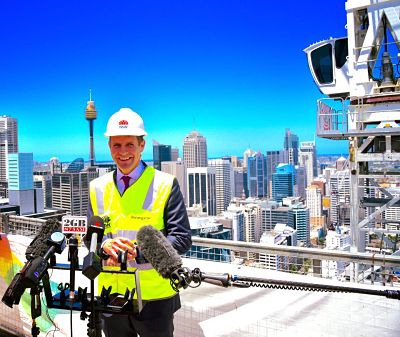NSW Premier Mike Baird has opened the door for potential rate increases, especially for buyers of apartments and multi-unit dwellings, aftert asking regulator the Independent Pricing and Regulatory Tribunal (IPART) with a wholesale review of the local government rating system.
Income from rates is critical to councils, who use the levies on property owners to fund a broad range of services and infrastructure.
However, the way in which rates are set and at what levels, has long been a battleground for cash-strapped local governments, particularly since the introduction of rate capping in NSW in 1979.
IPART Chairman Peter Boxall said the $4 billion collected in rates by NSW councils was a major source of funding for local government.
“This is an opportunity to revisit all aspects of how rates are levied and to design a system that better supports the sustainable operation of local government in the future and is more equitable.
“With billions of dollars and the provision of important services involved, a rating system that is efficient, equitable and sustainable is critical to the good performance of local government for the benefit of the NSW community,” Dr Boxall said.
Rates have also been central to the arguments on both sides of the forced council amalgamation debate. While Mr Baird has promised downward pressure on rates from council mergers, opponents of forced mergers have argued that this is unrealistic and that mergers force them up.
Reviewing the rates system was one of the key recommendations of the October 2013 Independent Local Government Review Panel’s report.
The key issues that the IPART review will look at are:
• Giving councils greater flexibility with the valuation method used to calculate rates. This will include considering whether councils could start charging rates based on the improved value of land, rather than the unimproved value. Land value is currently split between apartments in multi-unit dwellings.
• Removing some rate exemptions. Exempt land uses include land used by schools, charities, public hospitals, charities and national parks. Exempt people include pensioners.
• Changing the rates system to “improve councils’ long-term financial sustainability and encourage urban renewal.” Could getting rid of the much-hated rate capping be in the offing?
• Implementing the government’s promise to freeze rates for four years in areas where councils have merged
• Establishing a fair rates system after the four-year freeze on merged council rates
• Examining whether the current rating categories of: residential, business, mining and farmland are appropriate
You can find the issues paper here.
Developers unconvinced
Property developers were immediately suspicious of the push. Urban Taskforce chief Chris Johnson said he was concerned that the rates system review could affect the desirability of living in apartments and multi-unit dwellings.
Charges rates based on the improved value of land, for example with a new block of flats on it, has the potential to hit strata owners, apartment dwellers – via rate increases passed on as higher rents – and developers.
Mr Johnson said higher rates could hit the benefits of living close to public transport and jobs and the economic spin-offs from this: “I would be worried if the government encouraged local councils to [add] more costs, which means you lose some of the economic gains.”
He said the forced amalgamations process and the stress on financial sustainability had led to more councils being “hungrier in terms of looking into ways of making more money.”
“I think that IPART needs to be careful in their review of rates and to be aware that there are other mechanisms happening where councils are raising extra funds.
“I suspect rates will go up in certain areas. It will have an impact on apartments but marginal rate increases would not upset anyone too much.
“The danger here is to push the boundaries a bit too far and I think government is already starting to say: “let’s get value capture out of apartments and contributions to infrastructure and use the improved value.”
Mr Johnson said it could deter people from living in and buying apartments.
“Sydney can’t keep growing horizontally,” he said.
Ratepayers living in council areas slated for mergers will also be interested in the results of the review.
The government has pledged “no change to the existing rate paths for newly merged councils for four years.” IPART has said it interprets this to mean “the rating path in each pre-merger council’s area will follow the same trajectory as if the merger had not occurred.”
The review will take into account whether special rate variations should be allowed under certain circumstances, e.g. when Crown Land is transferred to councils or to fund a specific project.
Submissions close on May 13. You can comment here, or attend a public hearing in Sydney, which will be webcast, on April 26.
An interim report from IPART is due on NSW Local Government Minister Paul Toole’s desk by June 17 and the draft will be released publicly in August, with a final report in December.






Leave a Reply